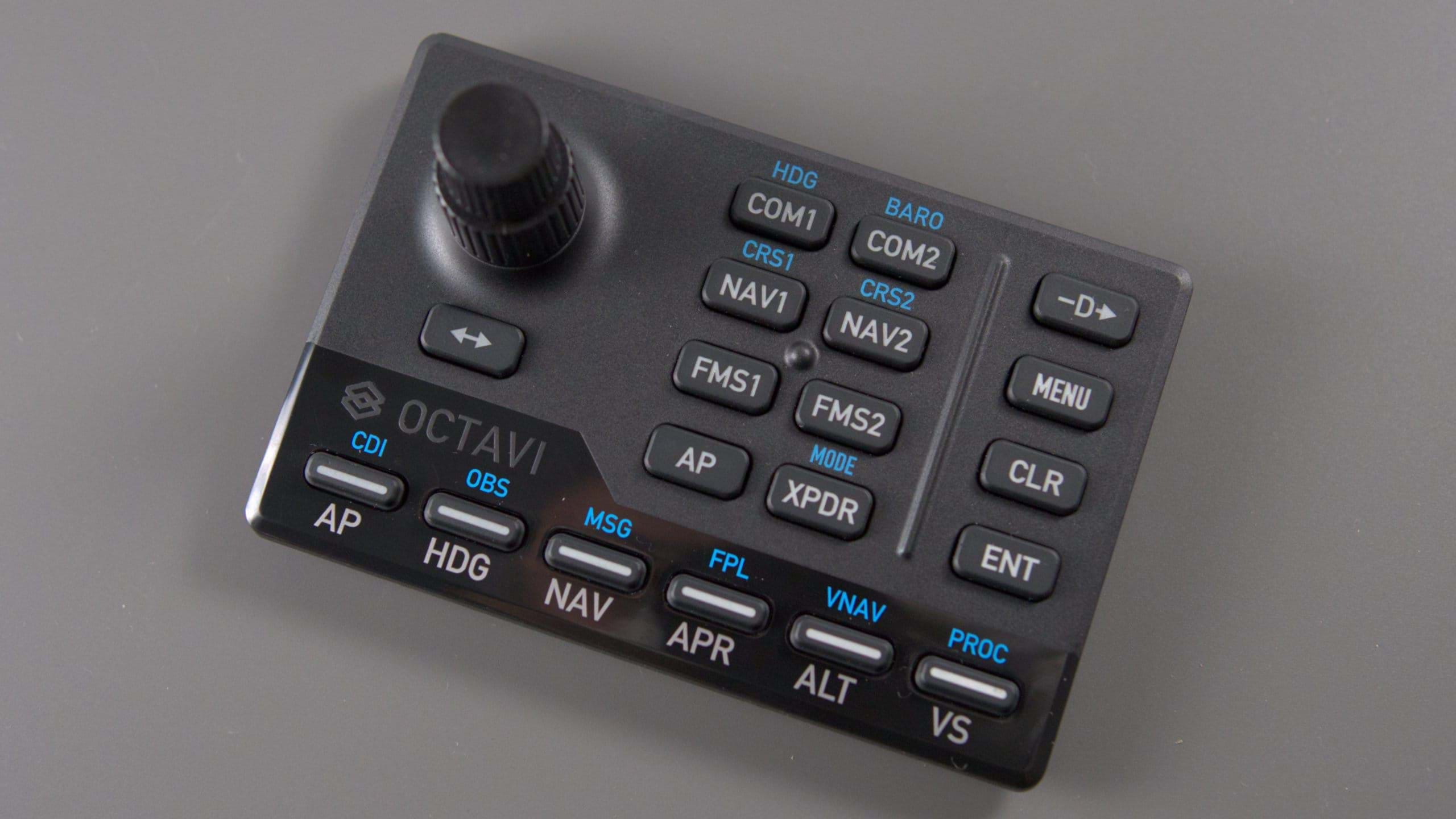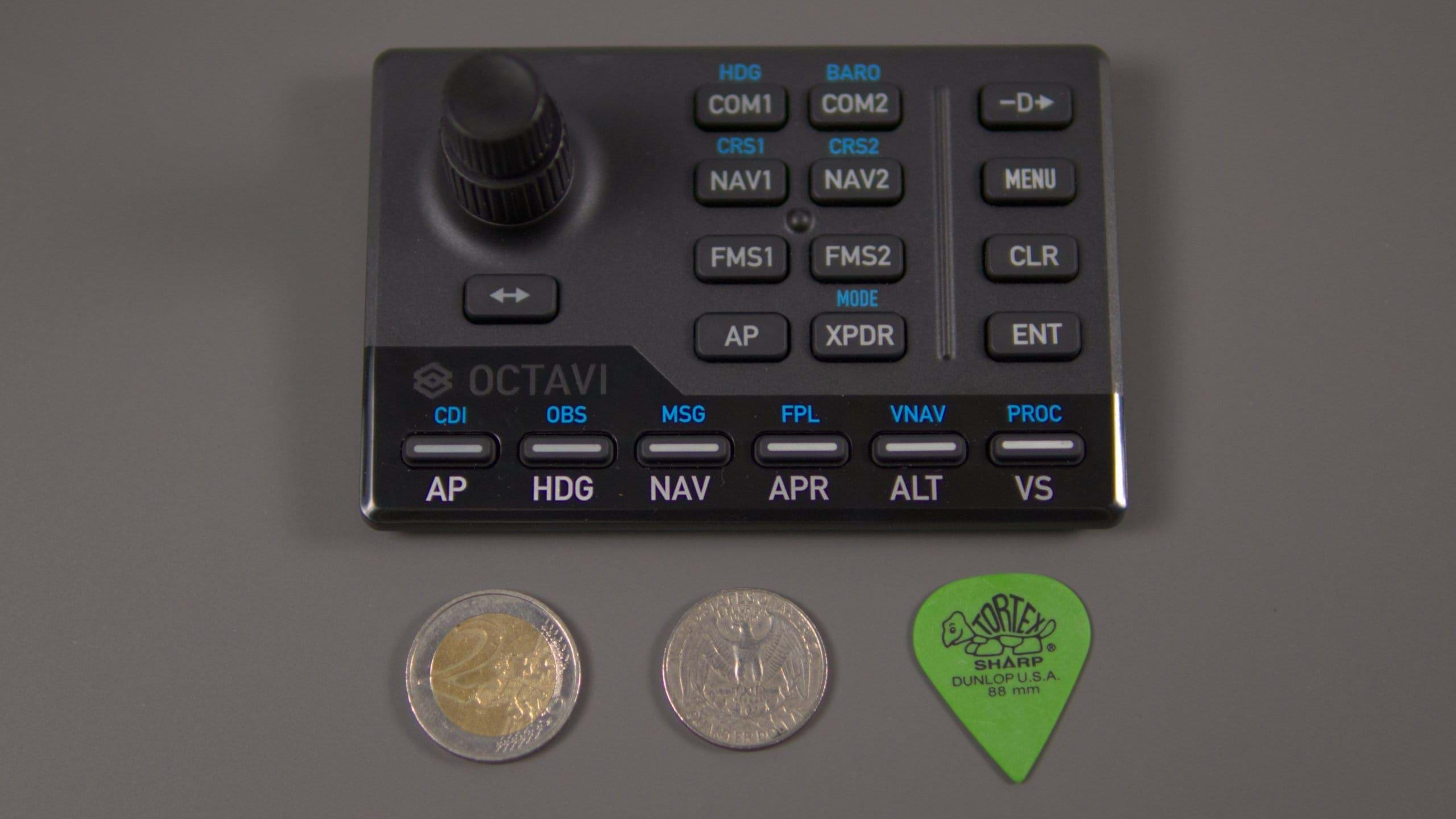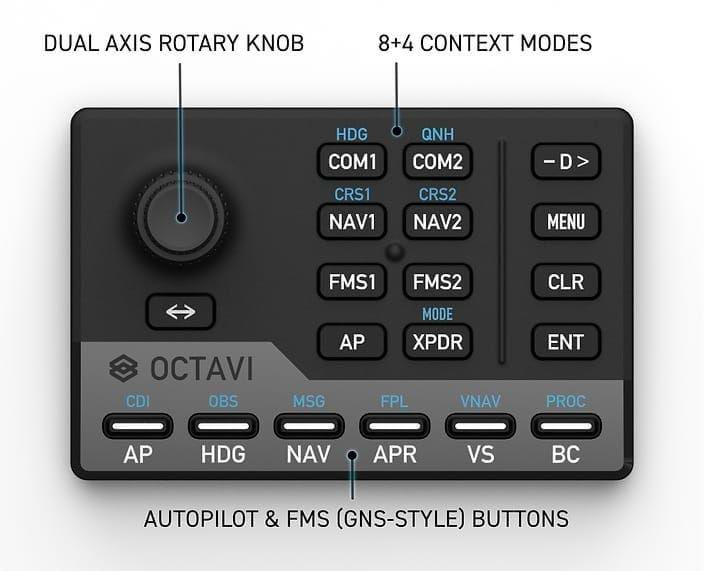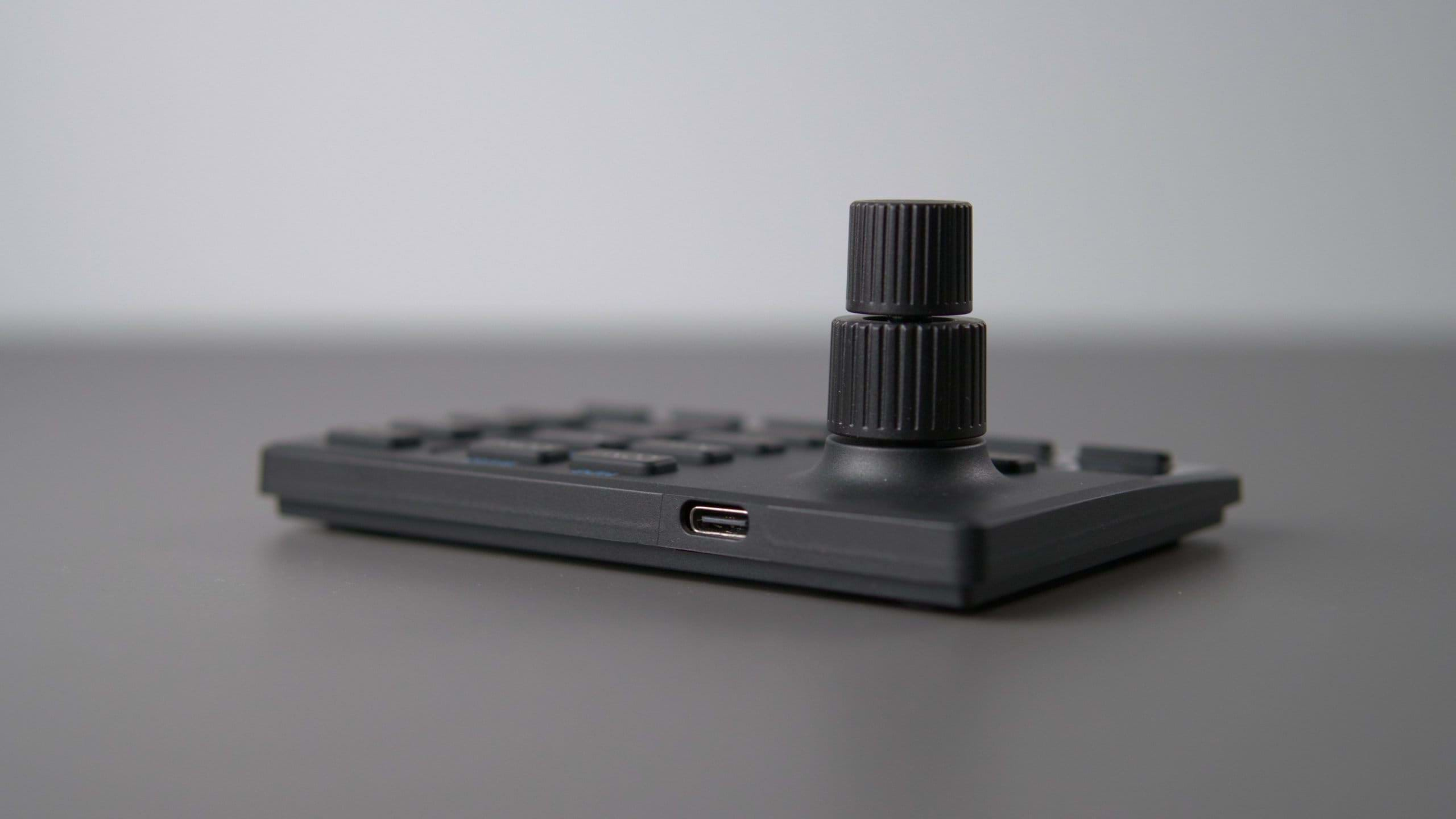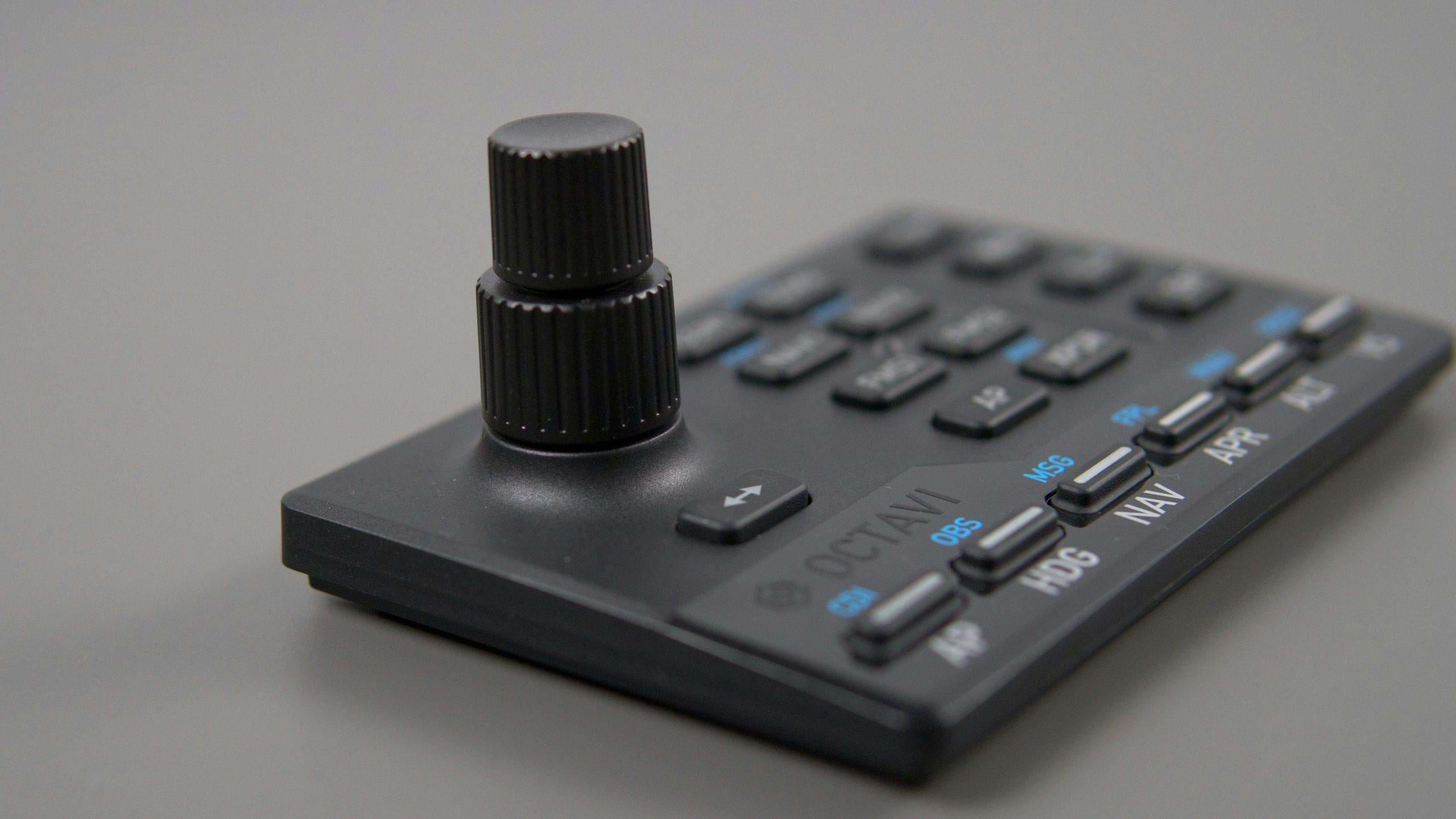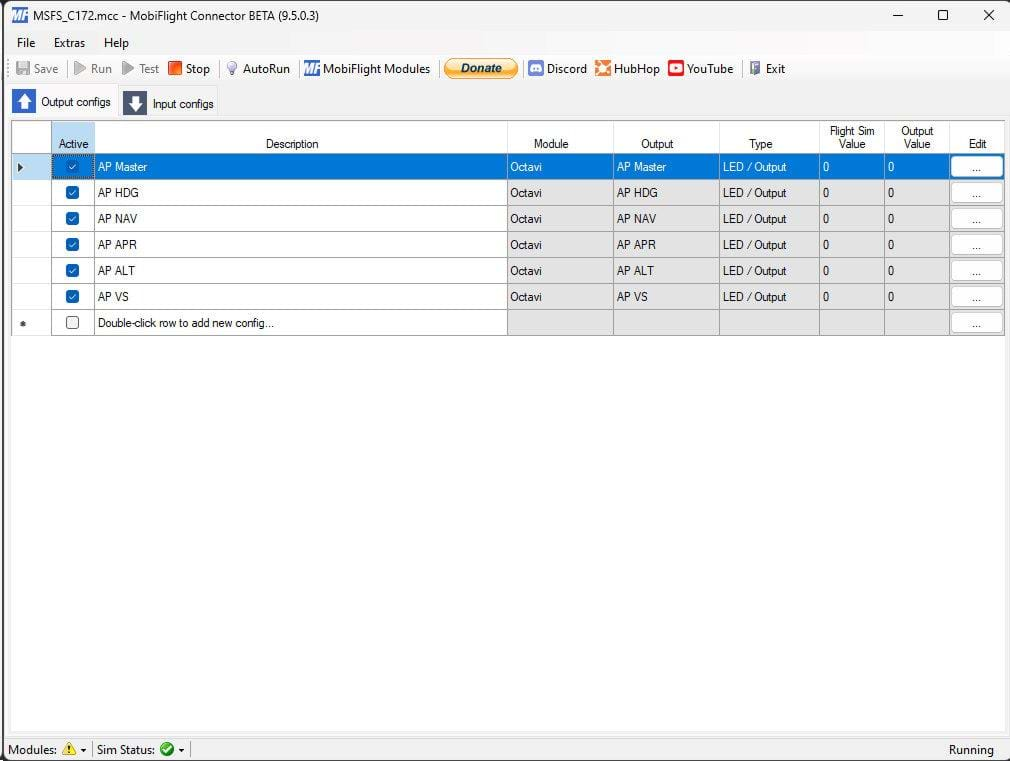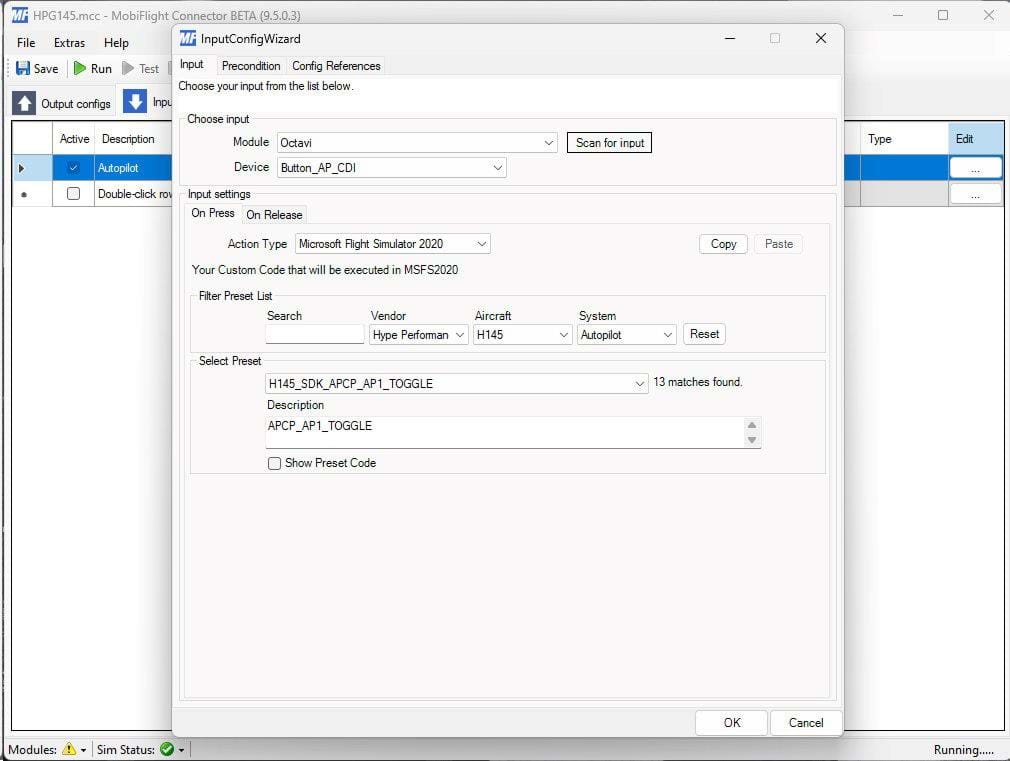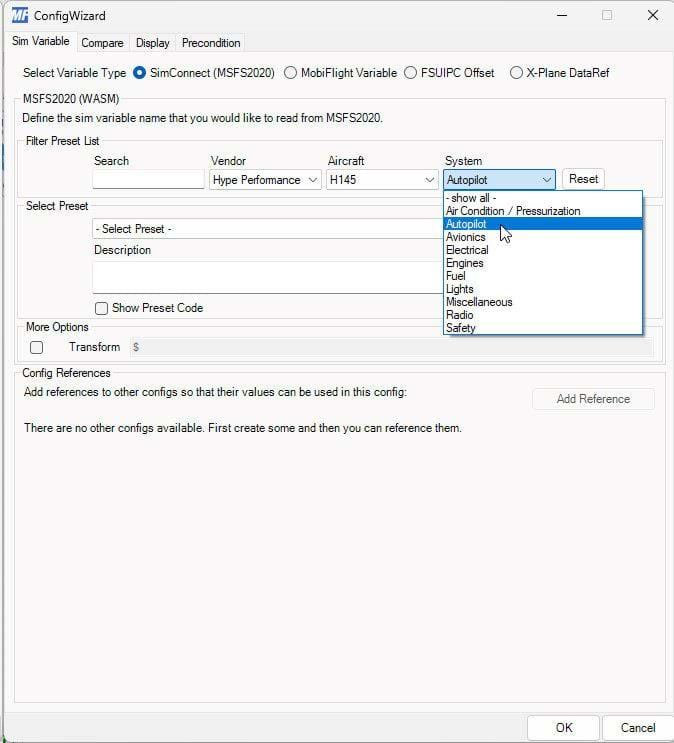I don’t know about you, but I love small, easy solutions that don’t take up a lot of space on my desk or that I can place near my collective. If these happen to solve more than one problem, that's obviously a bonus.
Octavi’s hardware, “an intuitive and ergonomic all-in-one device that lets you control all major instruments in a flight simulator” promises to be just that. I saw someone from the community talk about it back in September 2022 and I had to reach out to the company, ask for more information and about the possibility of reviewing the product.
Emails went back and forth. Octavi was still working on prototypes and considering going with a Kickstarted campaign. Fast forwarding to November, the campaign went up. It took off and the project was funded in less than 3 hours. In fact, it almost reached 2.5x the original goal of €38.500. Octavi end up with a very successful campaign, proof that there was a demand for the product, and €91.596 to help with the project.
According to the company, they are expecting the “deliveries for the Kickstarter campaign [to] go out this month”. And, if after reading this preview, you are considering getting this piece of hardware, you will need to wait for a bit more as “regular e-commerce will follow some time this year” but Octavi is not making any promises as of exactly when.
The fact that the product is ready to be shipped makes this a review instead of a preview but I have to say I had to think for a bit before publishing it since this unit is not for sale through regular channels so... Review or preview? I'll go with a review here.
Enough with the intro. Let’s get this started but first...
A note
The unit I received is a production model but, like I said, since the Octavi is still not selling through regular channels, a lot can change, so please keep that in mind.
Oh, and if you are thinking the Octavi is limited because it only has the functions that you can see in the labels, don’t go away because it doesn’t. I will explain it better further below, in the “Programming” section.
First look
This thing is small! It measures around 11cm x 7.5cm x ~1cm (4.33in x 2.95in x ~0.39in). You can see how it compares with a 2 Euro coin, a US$.25 coin, and a guitar pick (I shall call it the Proficient International Comparative Kit from now on, or just shorten it to P.I.C.K.).
It also weighs almost nothing. Perhaps as much as a small calculator.
Remember, Octavi does call it “the world’s smallest cockpit” and they are definitely trying hard to make it happen.
The unit is comprised of 6 buttons at the bottom of the face, a dual-rotary encoder + push button, which has a button underneath it (to change frequencies, for example), and then 2 other sets of buttons: 1 with 8 buttons and another one with 4.
The unit is made of good quality plastic in flat black with glossy plastic at the bottom, where the 6 buttons are present in a beautiful glossy finish.
The buttons are all rubber and very nice to the touch.
I was very impressed with the quality and the looks of the unit. Octavi did a great job.
Installation
The Octavi can work with MSFS and X-Plane right now and I tried it in both sims.
To get it to work, you will need a program called MobiFlight. There is actually a modified version, which Octavi sent me, and you will not find it in the link above – I’ve just added that for your reference.
Octavi also sent me 3 profiles to try the unit out, again, with MSFS and X-Plane.
I installed the software, plugged the unit via a USB-C to USB-A cable (provided by Octavi) and that was pretty much it.
Trying it out
I started MSFS to check it out for the first time. Then I opened Octavi’s version of MobiFlight.
Using the software, I opened up the Cessna 172 profile (yes, a fixed-wing profile but it’s irrelevant, really, since it is generic enough). I had to install the MSFS plugin (via the software) and restarted the sim.
Once I got back into it, I started trying the unit.
I have to be honest here – and I may be nitpicking a bit, but I do have to say this – I am not a fan of rubber buttons or membrane systems. I think they work fine with keyboards (as it dampens the sound – I can be a loud typist – but in these kinds of hardware units, there’s just something in them that feels odd to me.
It is not the way Octavi built the unit – it is quite well done, so it’s not a quality issue. It’s just a matter of choosing the physical interface. But, again being honest, I have to say I don’t see which other route they could have pursued without either making the unit much bigger or/and making it more expensive as well.
So, take this remark with a grain of salt as this is my personal opinion. I just felt I had to put it out there and you’ll understand why in the next sentence.
The unit worked very well during all my testing. There were a couple of times when the button press failed but that was operator error, not the hardware. I really don’t get along very well with these kinds of buttons (see, I told you my rambling was going somewhere). So, to reiterate, it was not a hardware failure. It was a “change user and press any key” moment.
Other than that, everything worked great with both sims.
The 8-button group allowed me to select which instrument to control (12 instruments total – I know what you’re thinking right now: “12 instruments with 8 buttons?”; we’ll get to that), the 4 buttons on the right are very handy shortcuts for GPS operations.
The 6-button group at the bottom is very handy for Autopilot operations and the dual-rotary encoder works fantastically well. And don’t let it fool you. It’s a single unit but it can be used with any of the aforementioned mentioned 12 instruments. You can count it as 12 rotary encoders.
Pretty cool!
About the 8 button/12 instruments, here’s why: if you look a the photos in this article (and the image with the description of parts above), you will notice that there are some labels in white and others in blue. The blue labels are the function for those buttons when the “shift mode” is on. This way, the COM1 button doubles as an HDG selector as well. COM2 as BARO, NAV1 as CRS1, and so on.
The same with the autopilot row at the bottom where each button doubles as GPS page selections as well.
Pretty cool, isn’t it? All in a small unit!
But here’s my second nitpicking. Well, I confess this is a bit more than just nitpicking and I already talked to Octavi about it. I would like to have an easy way to know if I was in “normal” or “shift mode”. There’s no feedback about which mode you are at unless you actually try pushing a button or rotating the encode.
I don’t think we would need anything wild but perhaps a couple of small LEDs with different colors (white and blue)? Maybe in different positions (to the left and right of the rotary encoder) to help people that have trouble distinguishing colors on LEDs? That would be a huge help.
Programming
All right, I know some of you thought that this product is limited. I mean… Look at the labels. That’s all it does, right?
Wrong. Remember that the unit works through Mobiflight and the software can be programmed. In fact, I gave it a try to see how it worked and I was really impressed by it – I didn’t know it before. You can assign buttons to several functions. As you can see below, I could set things up for the Hype Performance Group H145, for example.
This way, you can make your own full profiles for your custom aircraft.
Unfortunately, you can’t change the labels, but you can always cover them with small stickers with the functions you want to assign to the buttons and the rotary encoder.
What about VR?
Oh yeah, the usual question, of course. And for that, I have the usual answer. Just like with most of any physical hardware in the market, it’s either something that is very straightforward or you’ll have to get used to it.
Octavi did separate the different sections of the unit in a way that you can find them using your fingers quite easily. They even added a small notch in the middle of the 8-button section and a sort of ridge between that group and the 4-button group on the right.
You can easily distinguish the 6-button group at the bottom and you definitely can’t go wrong with knowing you have your hand on the encoder, with the single button underneath it.
Will you recognize everything instantly? No. Will you memorize all the functions? Probably not. But if you are looking at this piece of equipment you probably don’t mind or don’t use VR anyway, so I am guessing it’s not a problem for you.
As for me: I used the space between the nose and the headset as I was trying it. Not a big deal.
Conclusion
All right, what’s my verdict then?
I have to say I am quite impressed with Octavi’s work. The unit is super-compact and sturdy and it shows the company was careful about making a quality product.
The plastic feels like it has a nice quality to it, the encoder is solid and has no gaps, or any kind of slack and the amount of force needed to turn it is comfortable. The button it has is also satisfactory to push.
My only complaints have nothing to do with the quality of the product or how it operates since I didn’t have any problems as I was testing it during the last 2-3 weeks but more of how I pushed the buttons myself. I have to give the unit a lot of credit here as I managed to push the buttons in awkward ways (again, my own fault for not paying attention to what I was doing) and it still responded 99.99% of the time.
And why didn't I pay attention to what I was doing, you may ask? Well, because I was very comfortable with the unit and I didn't actually need to focus on it anymore. I just used it like any other piece of hardware.
I was curious about the Octavi when I first saw it. I started to be more interested as I exchanged some emails with the company and learned more about it and I was both excited and skeptical when I first opened the box and saw the unit for the first time. This is normal in me – I am a skeptical person and I feel that helps me review products since I end up approaching them in a more neutral way.
When I started using it, I knew I was in the presence of a good product. After a few weeks of use, I am sure of it.
If you are looking for a replica of a cockpit, this may not be for you. But if you are searching for a compact way of helping you control several instruments in an aircraft, I would tell you to take a look at the Octavi.
Also, I lied. I will make a size pun about sizes. Well, sort of.
Its size does matter (here it is) since it makes the unit quite portable. With a laptop, a small joystick with a twist grip, and an Octavi, you can be a better-equipped roaming flight simmer and feel the satisfaction of pushing some buttons in the cockpit – even in an hotel room.

